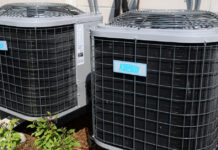We have received a proposal from a third solar power installation company, and I am leaning towards their solution. They have to get back to us with some additional details and some answers to questions, but it is looking pretty good.
I will refer you to my prior article in which I compare our first and second quote. From a power standpoint, this quote is right down the middle of the other two. Instead of 32 or 18 panels, it has 23. Instead of producing 80 percent of our annual power consumption, which is what the second quote did, it will produce 105 percent. It offers twice the battery capacity of our second quote and uses lithium iron phosphate batteries from Franklin, which I prefer over the Tesla Powerwall.
Most importantly, it had additional features, including a smart switch capability, which neither previous proposal included. When I looked at the equipment, the capacity and the capabilities this proposal offered, I was pleased.
Smart Technology
The technology included in the smart switch allows us to do several things. Here are two:
Smart Storage and Usage
We can run the system in what they call “maximum self-consumption” mode until the batteries sink to a pre-determined level. Then it will switch to grid power. This allows us to preserve some battery power for emergency backup.
Let’s imagine that the sun shines all day and the solar system powers our house and recharges our batteries to 100 percent. By 4 p.m., as the sun sinks behind the mountain, the amount of power generated by the solar panels is insufficient to supply the house, so the system turns to the batteries. After dinner, our power consumption drops, so the next morning, the batteries are at 76 percent. Once the sun rises, the solar panels will start powering the house with the batteries making up any deficit. When the sun is high enough that the panels are making more power than the house is consuming, the extra power will recharge the batteries. Once the batteries are recharged to 100 percent, the system sends any excess power back to the grid, earning us credit with our electrical company.
At 4 p.m., the sun starts to set again, so the system switches back to using battery power. The next morning, the battery is at 72 percent, but it is raining, so no solar power is being generated. The system continues to use the battery power until it drops to 50 percent, our pre-set level. Then the system switches to running the house on grid power, keeping that remaining battery power for an emergency. If the storm looks bad or there is wind, we can recharge the battery using grid power. Otherwise, we wait until the sun comes out and generates power.
Smart Switch
With this proposed system, we can power our whole house with solar power, but the system will shut off certain high-draw appliances when the amount of battery power sinks to a pre-determined level. For example, we can run our HVAC system using battery power until the battery drops to, say, 60 percent. Then it will shut off the HVAC to reduce the power draw and preserve the battery power for other loads. We can also set it to power the hot water heater only when we at least 40 percent battery power.
This technology replaces the critical loads panel that was included in the first quote. In that system, certain loads, like the HVAC, were not powered by the battery at all. If we’d gone with a whole-house generator, there would also have been circuits that were not covered by it. This system allows us to have seamless, whole-house performance for power outages of a short duration, whether four minutes or four hours. (The latter is our most common outage duration.) But if we have a four-day outage, the system forces us to conserve battery power by shutting down some household systems.
This system is also compatible with a generator, something the Tesla Powerwall was not. During a long power outage with bad weather or if snow covers the panels, we could use a generator to recharge the batteries and power the house. During a grid-down scenario, the smart switch acts as a transfer switch and won’t let the generator power, or the solar panel power, backfeed the grid.
The App
The downside of this technology is that an app controls it. In fact, except for solar systems intended for off-grid homes, most inverters use an app for system management and control. For example, we can set and adjust what I have referred to as “predetermined levels” using the app. The app will work as long as there is Internet service, and since we will have backup power, we should have internet service in all but the most catastrophic of failures.
In an end-of-the-world scenario when the grid goes down, the internet fails, and the company’s servers are offline, we can plug a network cable into some components and get readings on our laptop, but I expect we’ll also be looking at idiot lights and clicking little buttons. We’ll also lose access to some of our date, but the system will continue to work, and we’ll know how much battery power we have.
Of course, in a lengthy grid-down scenario, data like how much power we sent to the grid and how much grid power we consumed won’t matter. That’s much of what the app does. It’s useful for people trying to minimize their electric bill, but less important when there is no grid.
Timeframe
Once we sign on the dotted line, all three installers have told us it takes six weeks to get the system up and running. I’ll believe it when I see it. My previous experience with contractors leads me to believe it will take longer than they estimate.
Installation will take two days, but there is hurry-up-and-wait before and after. Equipment has to be ordered and shipped, permits have to be filed, extensive paperwork has to be filled out and sent to the utility, and then we wait for the utility to approve the net metering agreement. Only after approval will installation begin. Once it is done and tested, the county building inspector has to come on site and inspect the system. Then the utility gets a final opportunity to inspect it. Only after they give us permission to operate will we be allowed to commission the system and run it full time.
Our key, of course, is not to pay the vendor until we cross the finish line and have permission to operate.
Warranties
Most of the equipment comes with a warranty of 10 to 15 years, but the panels have a 25-year warranty. For major components, we can buy an extended warranty to go beyond the base warranty.
I don’t like extended warranties. What guarantee do we have that the company will even be in business in 15 or 20 years? Our world could change tremendously in that timeframe, which is why I am a prepper. If the companies go bankrupt, any money we pay now for an extended warranty is gone. If they get acquired by another company in the meantime, who knows if they will still honor our warranty, or if they will still sell the product line?
My plan is to use the warranty while it is active, and if something breaks in 2043 (or whenever), I’ll just replace it with whatever is state-of-the-art at that time. I expect battery capacity will continue to grow, inverters will probably get smaller and more efficient, and panels will produce more power.
In the meantime, I just have to hope we don’t get hit by an EMP.








